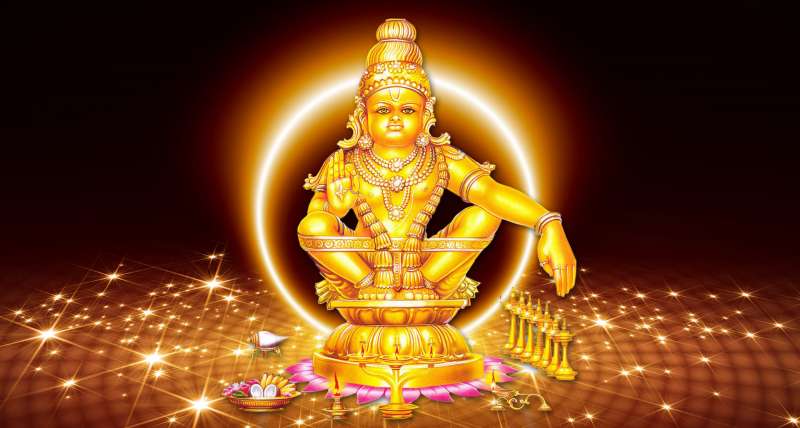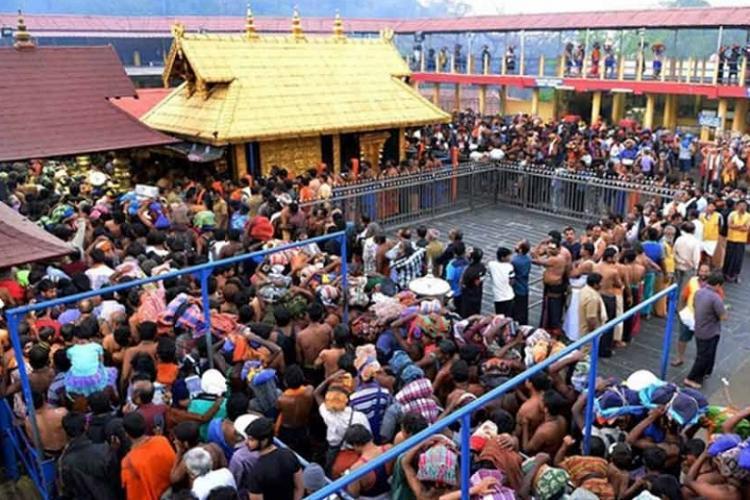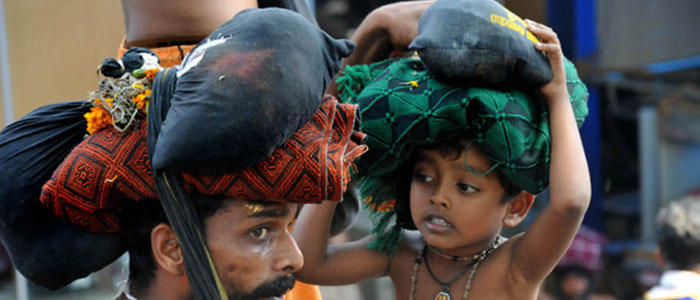
Photo :Asianlite
A festival is an event ordinarily celebrated by a community, entering around some characteristic aspect of that community and its religion. According to etymology the word festival is derived from “festivalis”, which literally means a church holiday. The origin of the word festival can be traced to Latin word “Festa” meaning a religious holiday. The adjective connected with festa was festivals and that word came into English via French. Days that were celebrated in religious feasts were called festival days. We can even trace festa back to older Latin word “fanum” which means temple and feriae which means rituals. Festivals spread brotherhood and faith in all religions. So, festivals are important to celebrate. Festivals are diverse, plenty and regular. Festivals increase the relations among the people, families gather together and have some fun and spread love everywhere. Festivals serve as check points and memorable land marks in our lives. Festivals give excellent opportunities to bring families and community together to strengthen ties. Festivals give a big impetus to business. We are really lucky to get birth in India. I am really proud to be born as Hindu. Hinduism gives a path, a guiding light to an individual so that he can merge with the indefinite one. The main purpose of a Hindu is to seek ones true identity to the inner self which remains untouched by the modern external world we live in. According to Bhagwan Krishna, success, failure, sadness and happiness all are integral part of our life journey.
“Tatvamasi”. This is the word through which Hinduism can be said in one word. But I realised the real meaning of the word inscribed at the entrance of the Lord Ayappa temple at Sabrimala.
Sabrimala is a Hindu temple complex located at the Periyar Tiger reserve in Kerela. SabrimalaSree Dharma Sastha temple is the most famous and prominent temples in Kerela. The temple is open to people belonging to all religions Hindu, Muslims, and Buddhism. This temple is now in news but I strongly believe that everyone must at least once in his life visit this temple. The shrine of BhagwanAyappa is located at the top of hill about 1700 feet above the sea level.The temple is administeredby the Travancore DevaswomBoard which is an autonomous body.SabrimalaSree Dharma Sastha temple is open for devotees for the first five days of everymonth in the Maltalam calendar.Two festivals Mandalam and Makarvilakku are celebrated between November to mid-January. We shall discuss the festival of Makara Vilakku in detail in this essay.

Austerities or Vrutham Vrats in Hindi start on Vrichikum approximately on November 15 which enables one to observe nearly 60 days of Vrutham before Makar Sakranti on January 14 which is most auspicious day at Sabrimala.Ancient Hindu sagas believe that periodic fasts or Varthams purify the human mind and body.By living an austere life and observing tapas in mind body and speech every man transforms into a better individual.
A devotee who wants darshan of lord Ayappa has to be pure mentally, Physically and spiritually.So, he has to observe a mandatory fast of 41 days.
A pilgrim who is on his maiden trip to Sabrimala is called KaniAyappan.The devotee starts 41days Vrathams after getting permission from his parents and Guru. A day is fixed for the commencement of the Vratham.One can go to any LordAyappa temple and offer pooja to one’s family deity. ThePoojarithen makes a holy knot with the yellow cloth containing Sava rupee currency.This means gaining approval from my family deity.
Then a sacred mala of Rudrakshasham is wornwhich is symbol of renunciation of material temptation. Whenone wears the mala, he swears total allegiance to Lord Ayappa. He surrenders histhoughts,words and deeds to the powerful deity. This is called as Sarangati.From that day he leads an austere life of an ascetic.
First day onwards one has to wake up early in the morning, take a bath and offer pooja to family god lord Shiva, nine planets Navgrahas and the holy mala.He is expected to shun all social activities and immerse himself in poojas,visited adjoining temples in his area. Nextdaysone is allowed only satvic food: milk,butter,dahi,chach and simple roti only twice a day.Eating meat,fish, consumption of alcoholic drinks, tobacco,smoking etc. is strictly prohibited.
Taking bath in pre-dawn time of morning and evening,regular application of sandalwood paste,Vibhooti followed by Pranayams and meditation and singing songs of Lord Ayappa is a regular routine for 41days. One should not shave during these days and refrain from hurting any life either physically, mentally or verbally. He should enchant names of lord Ayappa 108times daily.These days he is called Ayappaswamy,and carries a Tulsileaf withhim always to ward off evil and temptation.During these days one does not sleeps on bed and remainsbarefoot, practice yoga and aerobic exercises to keep himself fit for the arduous journey.
Aazhi pooja is the next step associated with the pilgrimage to Sabrimala.This symbolisesthe attainment of a renunciant frame of mind.This pooja was performed on an auspicious day before the holy trek begins.This ritual is also called Vellamkudi.Vellamkudi in the local Malayalam language means drinking sacred water.Quenching one’s thirst. We human beings want to satisfy our material desires.We all are attached to our materialistic body.By leading a spiritually oriented life for several days it is assumed that Ayappaswamy has attained considerate degree of purification emotionally,physically, mentally and spiritually.Our attachment to our body is the most important hindrance to attainment of god.

Camphor is usually used to start fire in a Havankunda.Rice flakes parched with rice and pieces of coconut isoffered into the HavanKunda.The flames are believed as Lord Ayappa.This ceremony means now our worldly desires are annihilated and extinguished by Lord Ayappa.God has bestowed us with new wisdom and calm mind.When camphor leaves come to an end that means our meaningless and small worldly desires have ended completely and Lord Ayappa has purified our body intoa pious soul.There is a Hindi word “Chaitanya”. It is assumed during the period a Swamy has taken bath two times a day. One takes limited food as required to subside his hunger, talk less and speak truth.If one has to do daily work for livelihood, he has to perform his duty with full devotion.Treat all humans as equal because the same Atma exists in all bodies.While talking with another the main Tarak Mantra,Swami Sarnam is uttered.This is a test of ones patience. One should develop compassion and empathy towards all. Never earn illegal money and never point out others mistakes.
Next step to this journey is preparation of travel kit. This is called as IrumadiKettu.Now one can climb on the journey to Sannidham. The bag symbolises LordAyappa trip to the forest to get tiger milk.The bag contains two pockets Munmudi which is the front portion and Pinmudi which is the rear pouch.Pooja articles and some other offerings are kept in the front pouch and personal belongings in the rear pouch. In Hindu dharma aim of every individual is to realise AhmBrahmasmi. I am god.I am united with God.God and I are not separate identities. We both are one.Irumundi binds the worshipper with God. The worshipped. After binding Irumundi the devotee and the devoted are not separate but one.Jivatma and parmatma both are like two birds sitting on one tree. One is enlightened.Coconut filled with ghee for Abhishekam,coconuts called as Vidlai,Thengai, BeetleLeaves, Jaggery, Cashew nuts, Raisins,Dry Ginger,Cardomons, Dates, Sandal paste, Rosewater, Lemon, Rice and Dal are taken on pilgrimage.The front portion of the Irumundi represents the good acts of the devotee and the rear one his sins and bad acts.Both good and bad acts are samarpit to Lord Ayappa. The first timers to Sabrimala perform “Pettatullal”.Petatullal is painting the face with colours and dancing with wooden weapons to make one look odd.The essence of this practice is to give up ones ego and surrender to Lord Ayappa.

On the track comes river PerurThodu. Lord Ayappa rested here during his expedition.By giving alms one starts his journey and is disposing of all his dharma and seeking asylum in Ayappa. The forest beyond PerurThodu is called as AyappaGarden.About ten kilometres from Perur Thodu is Kalaketti.After this Azhutha river a tributary of Pampa comes.The next important place is Inchipparakota where there is a shrine.Pilgrims offer prayers here and break coconuts.On the route then comes Karimala which is the abode of elephants. Pilgrims light the campfire to protect themselves from wild animals and cold weather.In the way it is very interesting to see Nazhikkinar a well within a well.This well has got spring like water.Here prayers are offered to different MaaDurga deities. Karimalanthan,Kochukaduthaswami and Bhagwathi.
Then on the way river Pampa comes.The pampa river is as holy as the Ganges and reference of this river also comes in Ramayana.Lord Ayappa was found by King Rajasekara here.Bathing in Pampa river purifies from curse and evil.The trek from pampa to Sannidhanam takes place. Pilgrim groups prepare feast with the provisions taken from Irumundi of the pilgrims.It is usually the Kanniswamy who are fed first as they are called Lord Ayappan himself.
The next morning after a dip in the pampa river one may perform Pitru Darpanam, a kind of shradh offerings to ones departed soul, and then start to climb hill Neelimala after worshipping at the temple of Lord Rama, Lord Ganapathi and Lord Hanuman. Now going further, the positive energy,happiness you will experience in unexplainable.After some distance from here is Sabripeetham.This is the place Sabri in the early times performedtapasya and waited for Lord Rama.Half way betweenSabripeetam and Sannidhanam is Saramkuthi.Here the Kanniswamy leaves the wooden arrowthey picked fromErumeli.
Then comes Patinettampadi which is about 15-minute walk from Saramkuthi. Pattinettampadi the famous 18 steps are now visible. These eighteen stepsare the most important in this journey.
The first five steps symbolise five human senses. Visual,auditory,olfactory,gustatory and tactile.The next eight steps symbolise the eight Ashtrags: Kama,krodhalobha,moha,madha,maltsarya,Asooya and Dhumb,meaning love,anger,avarice,lust,pride,unhealthy competition,jealousy,and boastfulness.
The next three steps stand for three gunas nature born qualities.Satva,Rajas and Tamas.The last twosteps represent Vidhya and Avidhya, i.e. Knowledge and Ignorance.
It is very essential to understand the significance of these 18 steps. These 18 steps to the sanctum are divine. Eighteen steps to the sanctum are divine,first step teaches us to attain knowledge and consciousness by right thinking,and viewing.Second step tells the pilgrimage bhakta to attain ultimate consciousness.Dwait and Aduait are the same thing.Adwait means God and Dwait means soul who has to attain wisdom.Third step impels us to attain right vision and insight.Now the Bhakt understands and gets the knowledge to be connected with the intellect. Fourth step signifies pure consciousness attained through pure knowledge.The fifth step indicates enlightenment.Sixth step reminds us of our old or previous births and impels us to try and attain self-realization in this birth by worshipping god Ayappa. Seventh step represents IcchaShaktior the will power.Eight step signifies Yagyam or sacred sacrifice.Ninth step signifies sacred Makar Jyoti or supreme celestial light.Tenth step represents Sadhana or Tapasya or meditation through which God can be attained.Eleventh step signifies union of God and Bhakt have intermingled with each other. Twelfth step symbolises non-dualistic state of consciousness.Thirteenth step the Bhakt discards his body and understands the Atma.Forteenth step AbhedaBhedAchintynaindicates, Supreme Brahm.Fifteenth step represents Nadbrahma meaning ecstasy.Sixteenth step represents Jyoti or light which is present in our body.A supreme effulgence exists in our body in the form of God. Eighteen step is considered the param feet the ultimate supreme feet of lord Ayappa.
“Tatvamasi”; the word is itself the epitome of Hinduism. and is called Mahavakya. Thou are a thatyou are. The meaning of this saying is that the self in its original pure primordial state iswholly orpartiallyidentical with the ultimate reality.
Every human being is Advaita. Absolute equality of that ultimate reality,Suddaadvaita. Oneness in essence, Vishishtadvaita. Advaitadvaita equal non-different with the ultimate reality,Madhvacharya. And AchintyaBhedaAbhed that means we are all inconceivable, oneness and difference between individual self. And all this, is just the essence of most of thefestivals we celebrate in India.
Author Bio : Anish Sethi, 22 years Law student from New Delhi. The Winner of The International Essay Competition , October (University Level,Win a trophy, e-certificate and 30$ gift coupon ).


